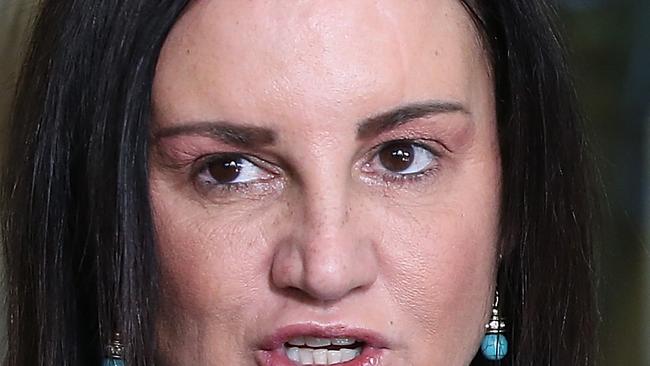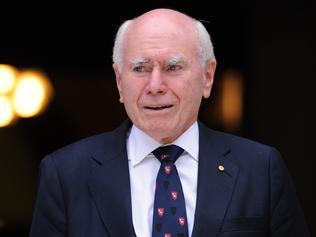
This is a budget that Labor would not dare deliver. It is based on big new revenue measures and big new spending initiatives.
It targets big banks with a highly inefficient liabilities tax. It increases the Medicare levy by half a percentage point. It restricts the value of negative gearing by limiting the deduction for depreciation to actual cash outlays as well as disallowing the costs of travel to rental properties. These are big changes.
Receipts as a proportion of GDP rise from 23.8 per cent in 2017-18 to 25.4 per cent in 2020-21. The last time receipts were as proportionally high as this was 2005-06, prior to the global financial crisis.
By contrast, payments as a proportion of GDP fall from 25.2 per cent next financial year to 25 per cent in 2020-21. (They increase to 25.4 per cent in 2018-19.) Note that both former treasurer Peter Costello and Audit Commission chairman Tony Shepherd have warned that fiscal repair is impossible unless payments fall to well below 25 per cent of GDP.
The budget attempts to draw a line under every policy area in which Labor is seen to have an advantage over the government; in particular, health, education and bank bashing.
To justify throwing money around like confetti on big infrastructure projects, most of which don’t appear to have been exposed to serious cost-benefit analysis (Snowy 2.0, for instance), the government is emphasising the distinction between the underlying cash balance and the net operating balance.
Note both figures exclude net Future Fund earnings before 2020-21. The $4 billion of earnings in 2020-21 contributes more than half of the underlying cash balance of $7.4 billion.
Over the forward estimates, the gap between the cash balance and the NOB (I particularly love that acronym) grows to nearly $10 billion. This is the party trick the government wanted to execute by making the arbitrary distinction between good and bad debt. It allows the government to assert that the government will not have to borrow for recurrent spending from 2018-19, an essentially artificial construct.
But the real issue is that the government can run but not hide. The face value of Commonwealth Government Securities on issue is projected to rise from $540 billion in 2017-18 to $606 billion at the end of the forward estimates. And gross debt will continue to rise, reaching $725 billion in 2027-28.
The interest paid on CGS will rise from $16.6 billion in 2017-18 to $20.4 billion in 2020-21. Needless to say, this is serious money; it would buy a lot of health, education or welfare spending.
The expectation of changes in the major economic parameters over the budget period, it has to be said, are on the optimistic side. Real GDP is expected to grow by 3 per cent per year from 2018-19, with nominal GDP (which principally drives revenue) also growing relatively strongly by past standards.
While bemoaning the current very low rate of growth of wages (as well as failing to explain this international trend), the wage price index is expected to tick up from the current figure of 2 per cent this financial year to 3 ¾ per cent in the last year of the forward estimates. This is close to a doubling of wage growth and underpins the optimistic growth of revenue from income tax.
To gauge the impact of these optimistic assumptions on the budget outcome, we need to look at the reconciliation of the underlying cash balance estimates. Over the entire forward estimates period, the positive impact of these parameter changes on the cash balance is over $5 billion relative to last year’s Mid-year Economic and Fiscal Outlook.
Mind you, the biggest impact on the cash balance is the additional $20.7 billion in receipts that are the result of policy decisions taken in this budget. (There is also an additional $14.5 billion in payments.) And the two biggest revenue decisions are the increase in the Medicare Levy and the Major Bank Levy (6 basis points on total liabilities of the big banks) which together will raise $14.4 billion over the forward estimates.
The two changes to negative gearing will rake in an additional $800 million. Ironically, they are classified as measures to “reduce pressure on housing affordability”. This rather flies in the face of the Coalition’s strong view that negative gearing doesn’t affect housing affordability and there is no case for Labor’s more radical decision to eliminate it for all assets apart from new residential real estate.
The most extraordinary aspect of this budget, apart from its deeply Labor roots of big spending and big taxing, is the Treasurer’s speech itself. Who utters sentences such as “Terribly, this had meant families have even broken apart” or “Australians have had to dig deep to keep our economy on the right track” or “We will provide the Australian Taxation Office with additional funding to chase and tax the crooks”?
Someone needs to give the Treasurer - let’s call him Scott Morriswan - a tip: that he is not delivering some infantile sermon to an excitable congregation but rather a serious policy document that sets the fiscal framework for the next four years.








To join the conversation, please log in. Don't have an account? Register
Join the conversation, you are commenting as Logout